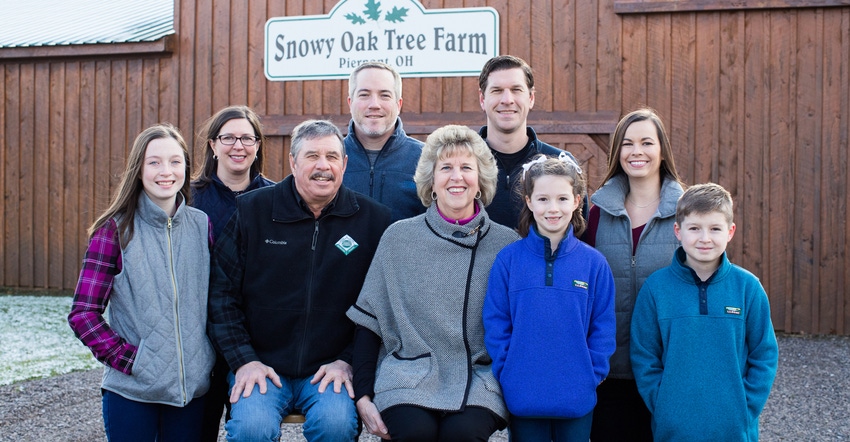
Paul and Joanne Mechling of Snowy Oak Tree Farm, who were Ohio Conservation Farm Family award winners last year, have a new title this year — 2019 Ohio Tree Farm of the Year.
In celebration, they are hosting a tour and welcoming family, friends, fellow tree farmers, conservationists and the general public to their certified tree farm.
The event is set for 9:30 a.m. to 3 p.m. Sept. 21, and it gives the opportunity for visitors to explore 8 miles of trails, view forest management, examine 12 acres of wetlands, walk through warm-season grasses and pollinator habitat, and learn how to plant wildlife food plots.
The Mechlings’ Ashtabula County, Ohio, farm is located at State Route 167 East, Pierpont Township. However, parking for the day is at the Pierpont Township Fire Hall, 6006 Marcy Road, Pierpont. Shuttle service will be provided to the farm.
The day will include presentations, displays and exhibitors:
• red oak regeneration
• drone demonstration
• more than 140,000 trees planted, representing 21 species
•a walking tour with botanist James Bissell of the Cleveland Museum of Natural History
• maple tubing and sap production
• kids’ activities
• wetland construction and the Wetland Reserve Program
• various conservation organization displays
• bridge construction
• invasive plant control
Snowy Oak Tree Farm was established in 1974 when Paul and Joanne moved to Ashtabula County for Paul to establish a much-needed veterinary practice in that area, and Joanne to teach.
Since 1997, the Mechlings have added to their initial 30-acre purchase with 12 more parcels totaling 365 acres. “These parcels were all high-graded, rut-filled, grapevine-infested and poorly managed,” Paul explains.
In 1978 a management plan was developed by a certified forester, and Snowy Oak Tree Farm has since been a certified tree farm through the American Forest Foundation, which inspects the woodlands every five years to ensure sustainable forestry.
Over the years, Paul has planted more than 140,000 trees, including 21 species of conifers and hardwoods, on mostly reverting agricultural fields. About 15,000 of them are oak trees whose trunks are protected with white plastic tubes until the tree trunks fill the tubes.
Variety of management measures
Paul practices grapevine control, invasive species control and woodland road maintenance with water bars, culverts and gravel stream crossings. For woodland improvement, he uses crop tree release.
“It’s like weeding your garden,” he explains. “I’m picking the good trees, like red oak, black cherry and sugar maple, and eliminating the others.”
The woods are comprised of hardwoods and conifers. The hardwoods include six different kinds of oak, cherry, black walnut and more. The conifers include white, black and Norway spruce; white pine; hemlock; larch; and bald cypress.
The maples were first tapped in 1996, as sort of a hobby for their couple’s son, Noah. Today, the family taps 3,000 trees and boils sap from another 1,500 trees from neighbors’ properties. “The income from maple syrup [about 18,000 gallons since the beginning] goes back into our tree farm for conservation projects,” Paul says proudly.
The arrival of the emerald ash borer has meant that about 135 of the larger white ash trees needed to be cut down. They use the wood for firewood, while a number of dead trees were left for wildlife habitat.
Also for wildlife, two areas of about 6 acres have been established, with pollinator habitat for monarch butterflies and pollinator insects.
“I like nice forests and clean environments. I get a lot of personal satisfaction,” he says. Paul notes that forests help clean the air and water, sequester carbon, provide aesthetics and a calming effect, and offer recreation, wood products and syrup.
For the daylong tour, Paul says, “At least 20 professional foresters will be giving guided, interpretive tours. Come prepared for a day of hiking, rain or shine. Our terrain is level compared to eastern and southern Ohio. We invite participants to make a day of it — this area has wineries, covered bridges, scenic rivers and excellent fishing.”
Food and beverages will be available for purchase. For additional information, call 614-309-6096
The Mechlings would appreciate RSVPs to [email protected].
About the Author(s)
You May Also Like






